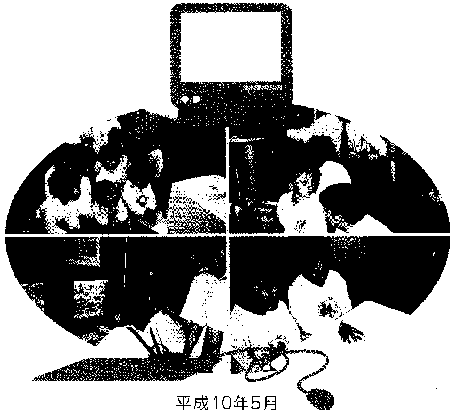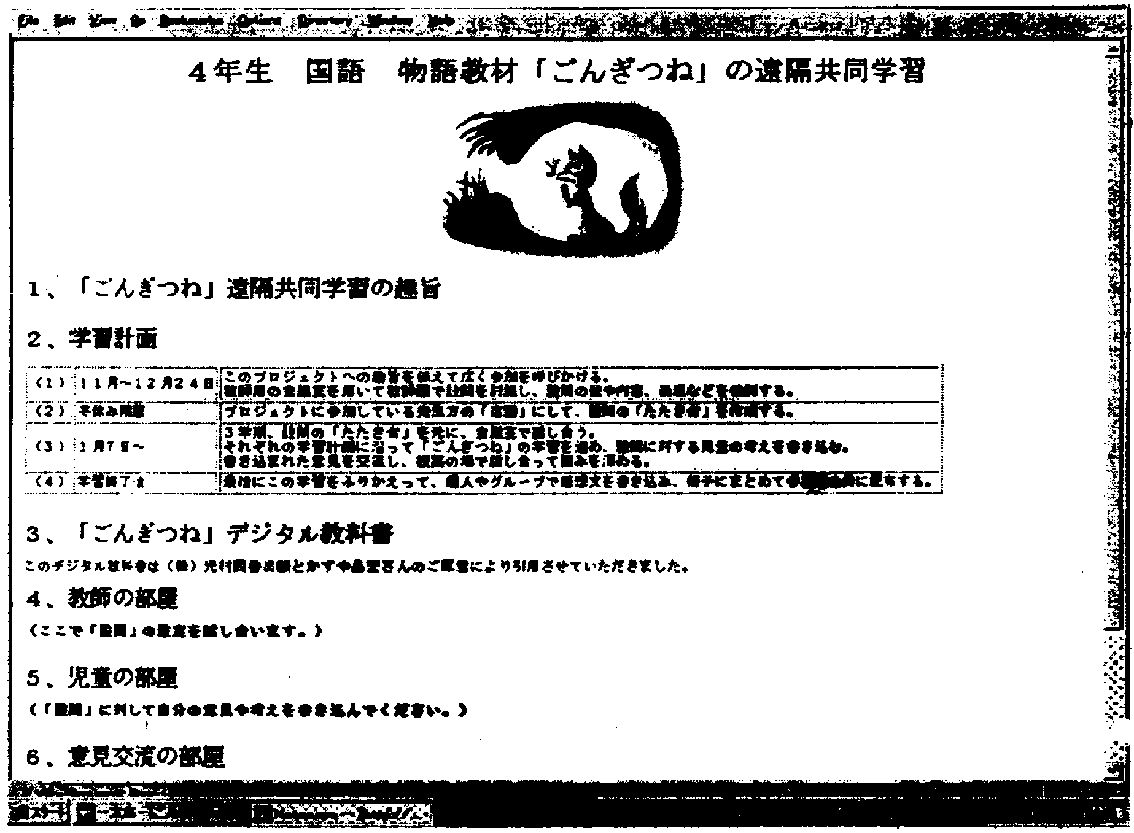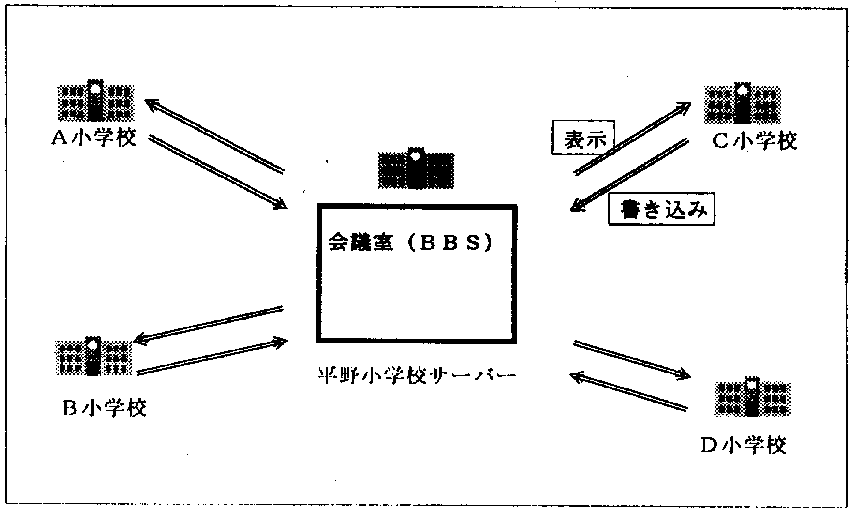Conference to introduce results from the 100-School Networking Project (Phase
II)
Elementary school meeting
Using the Internet to Learn about One's Hometown (Comprehensive Learning)
Hiroko Ando, OHYABU Elementary School
1. Introduction (aim)
- Our town of Wanouchi is located in the Nobi plains, one of Japan's largest
grain-producing regions. Three branches of the Kiso River run through the
area, which has experienced a number of heavy floods throughout its history.
Despite been born and raised in this area, most of our children are unfamiliar
with past flood damage or the history of flood control efforts, or the historic
remains of our hometown, because we've had no major floods for over a decade.
They first learn about waju, communities surrounded by dikes, from
reading about their hometown and the Nobi plains in social studies class in
the unit "Living in Lowland Areas." I wanted to give them a detailed
understanding of our unique region, and to teach them the following:
- 1) How our ancestors suffered as a result of floods, and how they struggled
against them;
2) How, in the past, citizens worked together to overcome their hardships;
3) The efforts of those who sacrificed their lives to make our town safe to
live.
My goal of teaching the students about Wanouchi this year is to heighten their
interest and deepen their understanding of their home region, in the hope
that they will come to love their hometown even more.
2. How the students are taught
- Our whole faculty teach lessons related to Wanouchi. Lower grade students
are introduced to the town's history, third and fourth graders do more in-depth
study, and higher grade students engage in projects that contribute to the
community.
- How the students are taught

- We integrated this study into our regular curriculum, to provide a compre
hensive lesson in our town's history.
3. Gathering materials
1) The first term

2) The second term

4. Sending information on the Internet

5. Conclusion
<Benefits>
- At the beginning of the year, the children showed relatively little interest
in their school district. But in studying its history and visiting its historical
sites, they grew more interested. They learned about flood prevention work
conducted by Satsuma loyal retainers during the Horeki period, and river construction
during the Meiji period, overseen by Johannes De Rijke, a Dutch engineer,
from the viewpoint of farmers.
- Using e-mail to share information about waju provided the perfect opportunity
for children to improve their communication skills.
- Because the information they provided—including a summary of the history
of Wanouchi—was used in so many schools, the children felt a sense of accomplishment.
- We were able to develop this comprehensive project, based within social
studies and studies of morals and ethics, and involving special activities.
We also made use of time allotted to us at the school's discretion.
<Goals for the future>
- Today, the banks of the Kiso River are strongly fortified, and improved
drainage systems make major floods something of a historical worry. Our daily
lives have changed as more and more people drive cars. A convenient main road
without traffic lights now runs on top of the waju bank, for which it was
not originally intended. We no longer build Mizuya-style houses—houses built
on dirt mounds to guard against floods—and the unique qualities of the waju
area are fading. All the same, we should try to remember our ancestors' hardships
and their skill in struggling against past floods. Our mission, as I see it,
is to preserve the historical facilities, tools, and geographical features
associated with these past floods.
- Our students' goal is to research and provide more useful and accurate information
that can be used in the unit "Living in Lowland Areas," for the fourth grade.
 Conference to introduce results from the 100-School Networking Project (Phase II)
Conference to introduce results from the 100-School Networking Project (Phase II)





 Conference to introduce results from the 100-School Networking Project (Phase II)
Conference to introduce results from the 100-School Networking Project (Phase II)